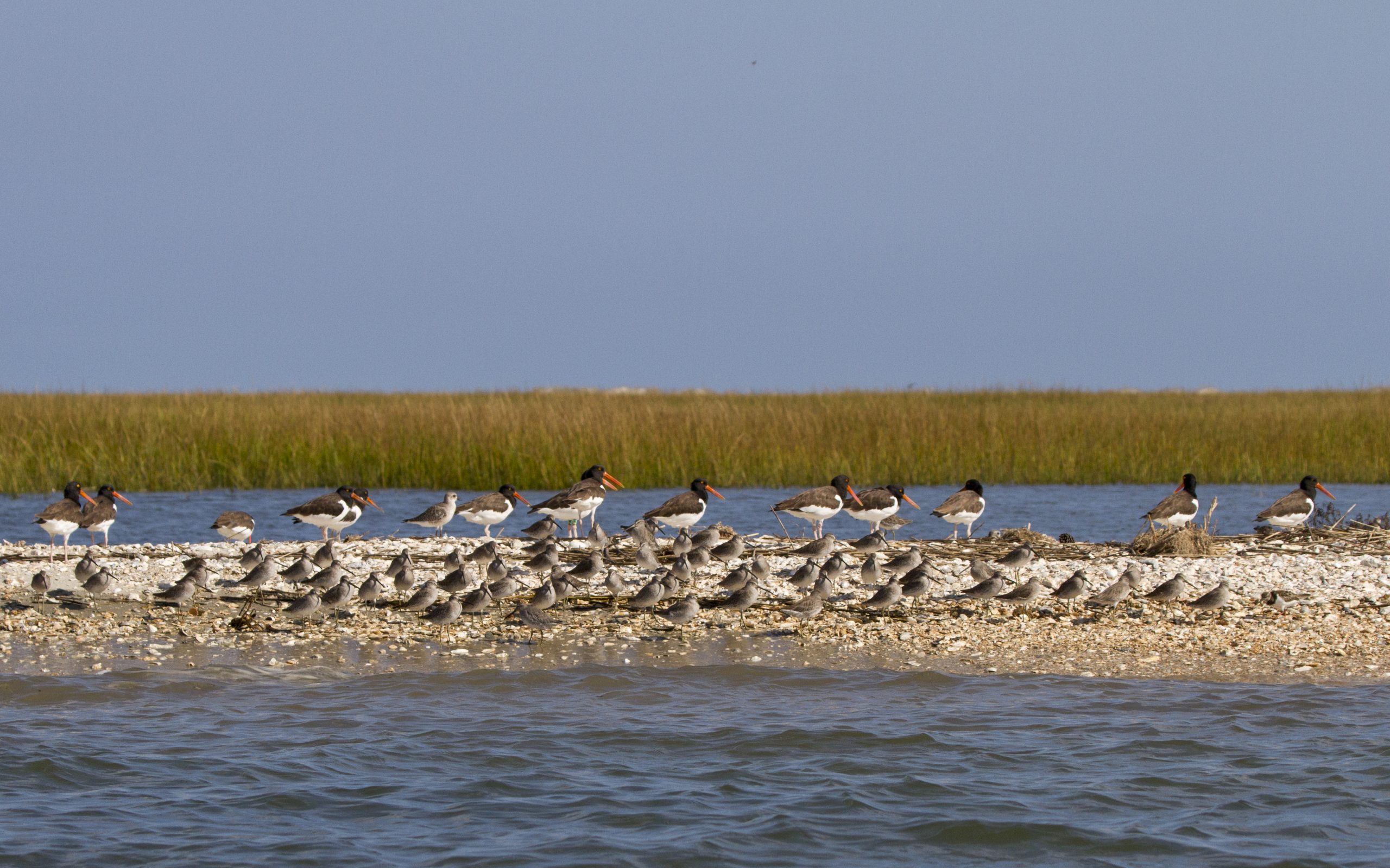
Audubon completes first phase of oyster reef restoration.
Audubon North Carolina has used money paid by Duke Energy companies, which had pleaded guilty to violations of the Clean Water Act, to build its first oyster reef project on the lower Cape Fear River to help restore bird and fish habitat and improve water quality.
Supporter Spotlight
The state program of the National Audubon Society announced this week that work is now complete on the first $300,000 phase of the project at Shellbed Island near the mouth of the river.
The nonprofit conservation organization noted how oyster reefs provide a vital food source for birds while also helping to sustain important nesting habitat called onshore shell rakes. Rakes are banks of old oyster shells that wash ashore once the mollusk dies. These shell formations can be found throughout the lower Cape Fear River and are used by birds like American oystercatchers to nest and raise their young.
The habitat that oysters support on the river has suffered as oyster populations plummeted in recent decades, contributing to a decline in water quality and depleting the source of shells that would typically replenish shell rakes, the group said.
“Oysters are amazing creatures because they support entire webs of life, from birds to fish to local communities. Building oyster reefs is one of the best ways to restore ecosystems in a way that mimics nature,” Curtis Smalling, director of conservation at Audubon North Carolina, said in a statement.
Shellbed Island is part of a network of bird sanctuaries on the river that Audubon protects and manages for nesting waterbirds, including species like American oystercatchers, royal terns, and brown pelicans. Audubon said its larger network of coastal sanctuaries, including barrier island habitat, provides a home to 40% of the state’s coastal nesting birds.
Supporter Spotlight
The new oyster reef at Shellbed Island consists of 140 concrete reef balls and 2,600 oyster bags, forming three 160-foot-long sills that will be exposed at low tide and submerged at high tide.

A single adult oyster can filter up to 50 gallons of water a day.
As larvae, oysters drift through the water until they attach to a hard surface, such as other oyster shells. New oysters are expected to begin growing on the reef in as soon as a year.
In the short term, the reef will provide foraging grounds for oystercatchers and habitat for fish and a wide variety of other marine organisms. In the longer term, the new reef will help sustain the nesting rakes on the island and others nearby.
The restoration is expected to benefit American oystercatchers in particular. Audubon said 100 breeding pairs of oystercatchers live on the lower Cape Fear River, a quarter of the state’s entire population. While the black and white birds with long, bright red bills and yellow eyes are familiar to beachgoers, they depend on oysters and their shells for food and nesting habitat.
Audubon said declines in oyster populations and reduced number of oyster reefs on the Cape Fear have put American oystercatchers in a precarious position with fewer shells available to build up rakes over time. Lower shell rakes leave oystercatchers’ eggs and chicks more susceptible to boat wakes and king tides that wash away their nests. Audubon said this overwash is the leading cause of nest failure for American oystercatchers on the river.
“American Oystercatchers have a special relationship with their namesake mollusk—they depend on oysters and their shells for food and a safe place to raise their chicks. The reef project will help ensure these special birds flourish on the Cape Fear River,” said Lindsay Addison, coastal biologist at Audubon North Carolina.
Although this is Audubon’s first oyster reef project on the lower Cape Fear, back in 2012, in partnership with the North Carolina Coastal Federation, the first oyster project at an Audubon site was a living shoreline installed at Beacon Island at Ocracoke Inlet.
Three additional reefs are permitted and designed for the river but await funding.
Audubon said it selected reef sites by a mapping and assessment process that identified physical habitats most likely to support healthy oyster reefs.
The project was funded in part by the National Fish and Wildlife Foundation with community service funds paid by the defendants in the cases, U.S. v. Duke Energy Progress Inc. and U.S. v. Duke Energy Carolina, LLC, in the U.S. District Court for the Eastern District of North Carolina.
Duke Energy Corp. was fined $14.4 million in 2015 for coal ash violations at its H.F. Lee, Cape Fear and Asheville steam electric plants. The violations related to Duke Energy’s failure to properly maintain coal ash impoundments and unpermitted discharges.
The plea agreement required Duke Energy to make a community service payment of $10.5 million to the National Fish and Wildlife Foundation, “to fund environmental projects, studies, and initiatives designed to benefit, preserve, and restore the riparian environment and ecosystems of North Carolina and Virginia affected by the Defendant’s conduct …”
The plea agreement also required Duke Energy to pay $5 million for wetlands mitigation in the Cape Fear, Neuse, Roanoke and six other river basins in North Carolina.
Audubon North Carolina said funding for the Shellbed Island project came through the National Fish and Wildlife Foundation’s North Carolina and Virginia Rivers and Waters Program.








